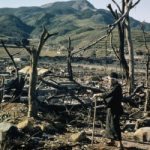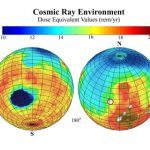Bernard L. Cohen
We know a great deal about the cancer risk of high radiation doses from studies of Japanese A-bomb survivors, patients exposed for medical therapy, occupational exposures, etc. But the vast majority of important applications deal with much lower doses, usually accumulated at much lower dose rates, referred to as “low level radiation” (LLR). Conventionally, the cancer risk from LLR has been estimated by use of the linear no-threshold theory (LNT). For example, it is assumed that the cancer risk from 0.001 Sv (100 mrem) of dose is 0.001 times the risk from 1 Sv (100 rem).
In recent years, the former risk estimates have often been reduced by a “dose and dose rate reduction factor”, which is taken to be a factor of two. But otherwise, the LNT is frequently used for doses as low as one hundred-thousandth of those for which there is direct evidence of cancer induction by radiation. It is the origin of the commonly used expression “no level of radiation is safe” and the consequent public fear of LLR.
The importance of this use of the LNT is difficult to exaggerate. It is estimated that in the USA, US$85 billion will be spent in cleaning up the Hanford site to avoid LLR, and comparable sums will be spent on government operating sites at Savannah River, Rocky Flats, Fernald and several others. If the LNT is wrong and LLR is harmless, all of this money will be wasted. Some other areas where huge sums of money are devoted to avoiding LLR are:
Radioactive waste storage technology and repository siting.
Reactor accident safety. Even in the worst accidents, well over 90% of the calculated deaths are from LLR.
Reduction in routine emissions of radioactivity from nuclear plants.
Reduction of radon levels in homes.
Some other problems that would disappear if LNT calculations of the effects of LLR were proven wrong include:
The 10 000 to 20 000 deaths claimed to be anticipated from the Chernobyl accident.
The fallout from nuclear bomb testing.
Patient fears of diagnostic x-rays, which often compromises the effectiveness of medical treatment.
The LNT paradigm has been carried over to chemical carcinogens, leading to severe restrictions on use of cleaning fluids, organic chemicals, pesticides, etc. If the LNT were abandoned for radiation, it would probably also be abandoned for chemical carcinogens. If view of the above, it is important to consider the validity of the LNT. That is the purpose of this paper.
Basis for the Linear No-Threshold Theory
The principal basis for the LNT is theoretical, and very simple. A single particle of radiation hitting a single DNA molecule in a single cell nucleus of a human body can initiate a cancer. The probability of a cancer initiation is therefore proportional to the number of such hits, which is proportional to the number of particles of radiation, which is proportional to the dose. Thus, the risk is linearly dependent on the dose; this is the LNT.
The problem with this very simple argument is that factors other than initiating events affect the cancer risk. Our bodies have biological defence mechanisms (BDMs) which prevent the vast majority of initiating events from developing into a fatal cancer; some more specific examples follow:
Our bodies produce DNA repair enzymes, which repair the effects of initiating events with high efficiency.
Cancer development is a multi-stage process, and consideration must be given to how radiation may affect stages other than initiation.
Radiation can alter cell-cycle timing, which can affect cancer development; damage repair is effective only until the next cell division (mitosis) process, so changing this available time can be important.
There is good evidence that the immune system plays an important role in preventing cancer development, and its potency can be altered by radiation.
All of these considerations and others, which we refer to collectively as BDMs, require consideration. The simple basis for the LNT described above is thus far too simple.
There is plenty of very direct and obvious evidence on this. For example, the number of initiating events is roughly proportional to the mass of the animal; more DNA targets means more hits. Thus, the simple theory predicts the cancer risk to be proportional to the mass of the animal. But experience indicates that the cancer risk in a given radiation field is roughly the same for a 30 gram mouse as for a 70 000 gram man, and there is no evidence that elephants are more susceptible than either.
If only the number of hits (which is proportional to the number of initiating events) were relevant (regardless of the mass of the target), then our very definition of dose in terms of radiation hits per unit mass of the target would be misleading. Another obvious example of the failure of the simple basis for the LNT is in the spectacular increase in cancer incidence with age. Young people experience cancer initiating hits as frequently as old people, but the probability for a cancer to develop is much higher in old people.
There are also serious problems on the molecular level (Ref 1). DNA damage events like those caused by radiation are occurring all the time in our bodies due to chemical and other spontaneous processes. Single strand breaks occur at a rate of 150 000 per day in each of the trillion cells in our bodies, whereas 0.1 Sv of radiation, which approaches the upper limit of LLR, causes only 200 per cell, an insignificant addition. As a counter-argument, it is sometimes suggested (despite contrary evidence) that double-strand breaks (DSBs) are dominantly important for initiating a cancer. These are much more rare, but an average cell experiences about 200 spontaneous DSBs per year, whereas 0.1 Sv gives it an average of only four DSBs, still an insignificant contribution.
It thus seems clear that cancer initiating events are of negligible importance in determining the dose-response relationship for radiation carcino-genesis in the LLR region. Apparently, the principal effect of radiation in causing cancer is from modifying BDMs, rather than from providing initiating events. Thus, the simple basis for the LNT has collapsed. The LNT can only be justified if the effectiveness of BDMs is reduced linearly with increasing dose. We next explore this possibility as part of the larger question of how LLR affects the molecular processes involved in cancer development.
Effects of LLR on Cancer Development
Cancers are initiated by genetic damage in a cell nucleus. One type of genetic damage that has been widely studied is chromosome aberrations, and it was long ago recognised that a high dose of radiation increases the number of these. However, Table 1 shows an in vitro example of how that process is affected if the high dose is preceded a few hours before by a low dose (LLR) (Ref 2). We see that the number of chromosome aberrations caused by the high dose is substantially reduced.
As an example of an in vivo experiment, Cai and Liu (Ref 3) reported that exposure of mouse cells to 65 rad caused chromosome aberrations in 38% of bone marrow cells and in 12.6% of spermatocytes. However, if these exposures were preceded 3 hours earlier by an exposure to 0.2 rad, these percentages were reduced to 19.5% and 8.4% respectively. There are many other examples of such experiments, both in vitro and in vivo, and the results are usually explained as stimulated production of repair enzymes by LLR. These are examples of what is called “adaptive response” (Ref 4) ? the body adapts to effects of radiation by developing protective responses.
Another type of experiment that reveals effects of “adaptive response” involves detection of genetic mutations. As an example of an in vitro experiment (Ref 5), it was found that an x-ray exposure of 300 rad induced a frequency of mutations in a particular gene (the hprt locus) of 15.5 x 10?6. If this large exposure was preceded 16 hours earlier by an exposure of 1 rad, this frequency was reduced to 5.2 x 10?6. As an in vivo example (Ref 6), it was found that the percentage of dominant lethal mutations in offspring resulting from exposures of female drosophila to 200 rad of x-rays before mating was substantially reduced by preceding this high dose with an exposure to 2 rad. For different strains of drosophila and different oocyte maturities these percentages were reduced from 42% to 27%, from 11% to 4.5%, from 40% to 36%, from 32% to 12.5%, from 42% to 30%, and from 51% to 22%.
A technique has recently been developed for directly observing repair of DNA base damage, and it was applied to studying adaptive response (Ref 7). It was found that preceding an exposure to 2 Gy of gamma radiation with 0.25 Gy four hours before, reduced the time for 50% lesion removal from 100 minutes to 50 minutes.
It has sometimes been argued that adaptive response may only be effective against large doses of radiation, but it has recently been shown (Ref 8) that exposures to low doses of radiation can reduce the rate of spontaneous neoplastic transformation in cells by three-fold or more.
Since the immune system is important in resisting the development of cancer, the effects of LLR on it are relevant here. The effects of LLR on several different measures of the immune response are listed in Table 2 (Ref 9). We see that by each of these measures, the immune response is increased by LLR. There is at least one study of this effect over a wide range of radiation doses (Ref 10). It reports increases in immune response by 80% in vitro and by 40% in vivo at about 20 rad followed by a rapid decrease to well below the unirradiated level at doses of about 50 rad.
All of the work reported in this section suggests that LLR is protective against cancer; quite the opposite of what is expected from the LNT. Not only has the simple basis for the LNT collapsed, but also there is a large body of evidence indicating that a more complete treatment of the problem would show a decrease in risk with increasing dose in the low dose region. However, final decisions on dose-response are always most heavily weighted on experiences with exposures to humans. The data on this are summarised in the next section.
Risk vs. Dose Data from Human Exposures
The principal data that have been cited by those in influential positions (Ref 11 and Ref 12) to support the LNT are solid tumours (all cancers except leukaemia) among the Japanese A-bomb survivors, and an International Agency for Research on Cancer (IARC) study of occupational doses to radiation workers. The former data (Ref 13) are shown in Figure 1, where the error bars represent 95% confidence limits (two standard deviations). If error bars are ignored, the points do indeed suggest a linear relationship with intercept near zero dose. However, when error bars are considered, they give little statistically significant indication of excess cancers for doses below 25 cSv.
In fact, it has been shown (Ref 14) that considering the three lowest dose points alone, the slope of the dose-response curve has a 20% probability of being negative (risk decreasing with increasing dose). The analysis utilised by Reference 13 is very elaborate, involving fitting models with many variables ? city (Hiroshima, Nagasaki), sex, age at risk, year, age at exposure, time since exposure, and dose ? to determine both background expected deaths and excess deaths for each of the thousands of combinations of these variables. It is very difficult to understand the uncertainties in this analysis, but intuitively it is hard to accept that strong conclusions can be drawn from this data below 20 cSv, involving a total of 6312 observed deaths compared with the 6251 expected background deaths derived from the model.
In considering Figure 1, it may seem implausible for the curve over most of its range to be a straight line directed to zero intercept at zero dose, and then suddenly “dive down” in the low dose region. But one simple explanation of how this can occur is shown in Figure 2, which assumes a linear no-threshold dose-response relationship (labelled LNT), plus a stimulation of biological defence mechanisms at low dose (small dotted line). Adding these gives the resultant large dotted line at low dose, merging into the LNT line. Note that the zero ordinate is easily adjustable because of uncertainties in the “expected” number of tumours, and the LNT line goes to zero ordinate at a dose of about -5 cSv rather than zero because assigned doses do not include natural background.
Our resultant curve is an excellent fit to the A-bomb survivor data. With this explanation, one would not necessarily expect the dependence on sex, age, time since exposure, etc. to be the same for the LNT as for stimulation of biological defence mechanisms, which would invalidate the elaborate modelling process of Reference 13 for determining expected background deaths in the low dose region.
The other evidence that has been cited as supporting the LNT is the IARC study (Ref 15) of 95 673 monitored radiation workers in the USA, the UK and Canada. For all cancers except leukaemia, there were 3830 deaths but no excess over the number expected. The risk is reported as -0.07 per Sv with 90% confidence limits (-0.4, +0.3). There is surely no support for the LNT here.
However, for the 146 leukaemia deaths, this study does report a positive risk vs. dose relationship, and claims that this supports the LNT. The data are listed in Table 3. It is obvious from these data that there is no indication of an excess risk below 40 cSv (even the excess for >40 cSv is by only 1.4 standard deviations). The conclusion that this supports the LNT is based on an analysis which arbitrarily discards the data in Table 3, for which ratio of the observed to expected values is less than unity! They thus discard three of the seven data points.
While the solid tumour data on A-bomb survivors and the leukaemia data on monitored radiation workers are said to support the LNT (although the leukaemia data on the former group and the solid tumour data on the latter group do not), there are several studies that seem to contradict the LNT. The data on leukaemia among A-bomb survivors (Ref 13) are shown in Figure 3, with error bars indicating 95% confidence limits. These data strongly suggest a threshold above 20 cSv.
Similar behaviour is found for breast cancer among Canadian women exposed to x-ray fluoroscopic examinations for tuberculosis (Ref 16), the data for which are shown in Figure 4. Here again, there seems to be a decrease in risk with increasing dose, at least up to 20 cSv.
The data on lung cancer among these Canadian women (Ref 17), and also a one point study of 10 000 individuals in Massachusetts (Ref 18), are shown in Figure 5. Here again we see a decrease in the low dose region, in this case extending at least up to 100 cSv. In Figure 5, these data are compared with lung cancer data for the Japanese A-bomb survivors, and we can see a difference between the two data sets that is clearly statistically significant: the A-bomb survivor data gives a much higher risk at all doses. This can perhaps be explained by the difference between very high dose rate in the A-bomb survivors and the lower dose rate from protracted fluoroscopic exams extending over many weeks. In any case, Figure 5 must give pause for thought before using A-bomb survivor data to predict risks from LLR, which is the method normally used.
Perhaps the most frequently cited evidence against the LNT is based on bone and head cancers among dial painters, chemists, and others occupationally exposed to ingested radium (Ref 19). The data are shown in Figure 6. The error bars on the high dose data are one standard deviation, but there were no tumours among those with exposures below 1000 cGy, making it difficult to estimate error bars. The asterisks show the ordinate if there had been one rather than zero tumours in each category. The data in Figure 6 give no support for the LNT, and are strongly suggestive of a threshold behaviour. Moreover, this threshold behaviour is strongly supported with much better statistics by data from injection of radioactivity into animals (see references listed in Ref 20).
In summary of the data on human exposures, there are no statistically indisputable data sets. If one is guided by indications of marginal to moderately high statistical significance, there is more evidence suggesting a threshold than suggesting validity of the LNT at low doses.
Dependence of Latent Period on Dose
There is a substantial body of data, both on animals and on humans, indicating that the latent period between radiation exposure and cancer death increases with decreasing exposure. Earlier references on this work are listed in Ref 20, and the very elaborate, more recent studies by Raabe and others on dogs, people, and rats are reviewed in Ref 21. This means that for low exposures, the latent period exceeds the normal life span, so no actual cancers develop. Thus, there is an effective threshold.
This effect alone, even in the absence of all considerations discussed previously, would invalidate the LNT for LLR.
Obtaining Indisputable Evidence
A definitive answer to the validity of the LNT in the low dose region must be based on human data, but to obtain statistically indisputable data requires much larger numbers of subjects than can be obtained from occupational, accidental or medical exposures. The obvious source is natural radiation. If one attempts to use natural gamma radiation, which varies somewhat with geography, one is faced with the problem that the LNT predicts that only a few percent of cancers are due to natural radiation, whereas there are unexplained differences of tens of percent for different geographic areas.
For example, the percentage of all deaths that are from cancer varies in the USA from 22% in New England to 17% in the Rocky Mountain States (where radiation levels are highest). Another problem is that gamma ray backgrounds vary principally with geographic regions, and there are also many potential confounding factors that may vary with geography. Nevertheless, there have been attempts to study effects of the gamma ray background on cancer rates, and in general either no effect or an inverse relationship has been found. For example, no excess cancer has been found in the high radiation areas of India or Brazil. But all such effects can easily be explained by potential confounding factors.
A much more favourable situation is available for radon in homes. According to the LNT, it is responsible for at least 10% of all lung cancers, and a known confounding factor, cigarette smoking, is responsible for nearly all of the rest. Another advantage is that levels of radon in homes vary much more widely than natural gamma radiation.
There have been numerous case-control studies of the relationship between radon in homes and lung cancer. The results of the most credible of these are shown in Figure 7, and a meta-analysis of them (Ref 22) is shown in Figure 8. We see there that the results from different studies have been inconsistent. This work has given no statistically significant information on the validity of the LNT in the low dose region, which we define here as below 5 pCi/l which corresponds to 20?50 cSv (whole body equivalent dose) over a lifetime. A different approach, specifically designed for testing the LNT, was carried out by the present author and is described in the following section.
University of Pittsburgh Study
My group at the University of Pittsburgh developed an elaborate study designed specifically to test the LNT (Ref 23). We briefly review it here. We compiled hundreds of thousands of radon measurements from several sources to give the average radon level (r) in homes for 1729 US counties, well over half of all US counties and comprising about 90% of the total US population. Plots of age-adjusted lung cancer mortality rates (m) as a function of radon level are shown in Figures 9a and 9c.
Rather than showing individual points for each county, we have grouped them into intervals of r (shown on the baseline, along with the number of counties in each group). We plot the mean value of m for each group, its standard deviation (indicated by the error bars), and the first and third quartiles of the distribution. Note that when there is a large number of counties in an interval, the standard deviation of the mean is quite small. We see a clear tendency for m to decrease with increasing r, in sharp contrast to the increase expected from the supposition that radon can cause lung cancer, shown by the line labelled “theory”.
One obvious problem is migration: people do not spend their whole lives and receive all of their radon exposure in their county of residence at time of death, where their cause of death is recorded. However, it is easy to correct the theoretical prediction for this, and the “theory” lines in Figure 9 have been so corrected. As part of this correction, data for Florida, California and Arizona, where many people move after retirement, have been deleted, reducing the number of counties to 1601 (this deletion does not affect the results).
A more serious problem is that this is an “ecological study”, i.e. it relates the average risk of groups of people (county populations) to their average dose. Since most dose-response relationships have a threshold below which there is little or no risk, the disease rate depends largely on the fraction of the population that is exposed above this threshold, which is not necessarily closely related to the average dose, which may be far below the threshold. Thus, in general, the average dose does not determine the average risk, and to assume otherwise is what epidemiologists call the “ecological fallacy”.
However, it is easily shown that the ecological fallacy does not apply in testing a linear no-threshold theory (LNT). This is familiar from the well known fact that, according to the LNT, population dose in person-rem determines the number of deaths; person-rem divided by the population gives the average dose, and number of deaths divided by the population gives the mortality rate, which is the average risk. These are the quantities plotted in Figure 9. Other problems with ecological studies have been discussed in the epidemiology literature, but these have also been investigated and found not to be applicable to our study.
Epidemiologists normally study the mortality risk to individuals, m’, from their exposure dose, r’, so we start from that premise using the BEIR-IV version of the LNT (in simplified form; full treatment is given in Ref 23):
m’ = an ( 1 + b r’ )
for non-smokers
m’ = as ( 1 + b r’ )
for smokers
where an and as are constants determined from national lung cancer rates, and b is a constant determined from studies of miners exposed to high radon levels. Summing these over all people in the county and dividing by the population gives:
(1) m = [ S as + (1 – S) an ] ( 1 + b r )
where m and r have the county average definitions given above in the presentation of Figure 9, and S is the smoking prevalence (the fraction of the adult population that smokes).
Equation (1) is the prediction of the LNT theory that we are testing here (we also show that our test applies not only to the BEIR-IV version but to all other versions of the LNT theory). Note that it is derived by rigorous mathematics from the risk to individuals, with no problem from the ecological fallacy.
The term in square brackets in equation (1) we call m0, thus equation (1) becomes:
(2) m = m0 ( 1 + b r )
The term m0 contains the information on smoking prevalence, so m/m0 may be thought of as the lung cancer rate corrected for smoking. Figures 9b and 9d show m/m0 as a function of r. We fit the data (all 1601 points) to the equation:
(3) m/m0 = A + B r
From this, we derive values of B, which can be compared with b in equation (1).
The theory lines are from equation (1) with slight re-normalisation at a value of 1 pCi/l, because A in equation (3) is found not to equal unity as in equation (2). It is clear from Figures 9b and 9d that there is a huge discrepancy between measurements and theory. The theory predicts B = +7.3% per pCi/l, whereas the data are fitted by B = -7.3 (?0.6)% and -8.3 (?0.8)% per pCi/l for males and females respectively. We see that there is a discrepancy between theory and observation of about 20 standard deviations; we call this our “discrepancy”.
All explanations for our discrepancy that we could develop, or that have been suggested by others, have been tested and found to be grossly inadequate. We review some of the details of this process here.
There may be some question about the radon measurements, but three independent sources of radon data (our own measurements, US Environmental Protection Agency measurements, and measurements sponsored by various states governments) have been used and each gives essentially the same results. These three sets of data correlate well with one another, and by comparing them, we can estimate the uncertainties in each and in our combined data set; these indicate that uncertainties in the radon data are not a problem.
Another potential problem is in our values of smoking prevalence, S. Three different and independent sources of data on smoking prevalence were used, and all result in essentially the same discrepancy with the LNT seen in Figures 9b and 9d. Nevertheless, since cigarette smoking is such an important cause of lung cancer, one might think that uncertainties in S values can frustrate our efforts.
Analysis shows that the situation is not nearly so unfavourable. The relative importance of smoking and radon for affecting the variation of lung cancer rates among US counties may be estimated by use of the BEIR-IV theory. For males, the width of the distribution of S values, as measured by the standard deviation (SD) for that distribution, is 13.3% of the mean, and according to BEIR-IV a difference of 13.3% in S would cause a difference in lung cancer rates of 11.3%. The SD in the width of the distribution of radon levels for US counties is 58% of the mean which, according to BEIR-IV, would cause a difference in lung cancer rates of 6.6%. Thus, the importance of smoking for determining variations in lung cancer rates among counties is less than twice (11.3/6.6) that of radon. Smoking is not as dominant a factor as one might intuitively think it is.
Even more important for our purposes is the fact that smoking prevalence can only influence our results to the extent that it is correlated with the average radon levels in counties. Thus, we are facing a straightforward quantitative question: how strong a correlation between S and r, which we label CORR-r, would be necessary to explain our discrepancy? If we use our best estimate of the width of the distribution of S values for US counties, even a perfect negative correlation between radon and smoking prevalence (CORR-r = -1.0) eliminates only half of the discrepancy. If the width of the S value distribution is doubled, making it as wide as the distribution of lung cancer rates, which is the largest credible width since other factors surely contribute to lung cancer rates, an essentially perfect negative correlation (CORR-r = -0.90) would be required to explain the discrepancy. To cut the discrepancy in half requires CORR-r = -0.62.
How plausible is a CORR-r that is this large? There is no obvious direct relationship between S and r, so the most reasonable source of a correlation is through confounding by socio-economic variables (SEVs). We studied 54 different SEVs to find their correlation with r. We included population characteristics, vital statistics, medical care, social characteristics, education, housing, economics, government involvement, etc. The largest magnitude for CORR-r was 0.37, the next largest was 0.30. For 49 of the 54 SEVs, the magnitude of CORR-r was less than 0.20. Thus a CORR-r for smoking prevalence, S, which even approached a magnitude of 0.90, or even 0.62, seems completely incredible. We conclude that errors in our S values can do little to explain our discrepancy.
In another largely unrelated study (Ref 24), we found that the strong correlation between radon exposure and lung cancer mortality (with or without S as a co-variate), albeit negative rather than positive, is unique to lung cancer. No remotely comparable correlation was found for any of the other 32 cancer sites. We conclude that the observed behaviour is not something that can easily occur by chance.
To investigate effects of a potential confounding variable, data are stratified into quintiles on the values of that variable, and a regression analysis is done separately for each stratum. Since the potential confounding factor has nearly the same value for all counties in a given stratum, its confounding effect is greatly reduced in these analyses. An average of the slopes, B, of the regression lines for the five quintiles then gives a value for B that is largely free of the confounding under investigation.
This test was carried out for the 54 socio-economic variables mentioned above, and none was found to be a significant confounding factor. In all 540 regression analyses (54 variables x 5 quintiles x 2 sexes), the slopes, B, were negative and the average B value for the five quintiles was always close to the value for the entire data set. Incidentally, this means that the negative correlation between lung cancer rates and radon exposure is found if we consider only the very urban counties, or if we consider only the very rural counties; if we consider only the richest counties, or if we consider only the poorest; if we consider only the counties with the best medical care, or if we consider only those with the poorest medical care; and so forth, for all 54 socio-economic variables. It is also found for all strata in between, for example, considering only counties of average urban-rural balance, or considering only counties of average wealth, or considering only counties of average medical care, etc.
The possibility of confounding by combinations of socio-economic variables was studied by multiple regression analyses and found not to be an important potential explanation for the discrepancy.
The stratification method was used to investigate the possibility of confounding by geography, by considering only counties in each separate geographical region, but the results were similar for each region. The stratification method was also used to investigate the possibility of confounding by physical features such as altitude, temperature, precipitation, wind, and cloudiness, but these factors were of no help in explaining the discrepancy. The negative slope and gross discrepancy with the LNT is found if we consider only the wettest areas, or if we consider only the driest; if we consider only the warmest areas, or if we consider only the coolest; if we consider only the sunniest, or if we consider only the cloudiest; etc.
The effects of the two principal recognised factors that correlate with both radon and smoking were calculated in detail:
Urban people smoke 20% more, but average 25% lower radon exposures than rural people.
Houses of smokers have 10% lower average radon levels than houses of non-smokers.
These were found to explain only 3% of the discrepancy. Since they are typical of the largest confounding effects one can plausibly expect, it is extremely difficult to imagine a confounding effect that can explain the discrepancy. Requirements on such an unrecognised confounding factor were listed, and they make its existence seem extremely implausible.
Since no other plausible explanation has been found after years of effort by myself and others, I conclude that the most plausible explanation for our discrepancy is that the linear no-threshold theory fails, grossly over-estimating the cancer risk in the low dose, low dose rate region. There are no other data capable of testing the theory in that region.
An easy answer to the credibility of this conclusion would be for someone to suggest a potential, not implausible, explanation based on some selected variables. Either they or I will then calculate what values of those variables are required to explain our discrepancy. We can then make a judgement on the plausibility of that explanation. To show that this procedure is not unreasonable, I offer to provide a not implausible explanation for any finding of any other published ecological study. This alone demonstrates that our work is very different from any other ecological study, and therefore deserves separate consideration.
More From SolarStorms.org:
Submit your review | |







